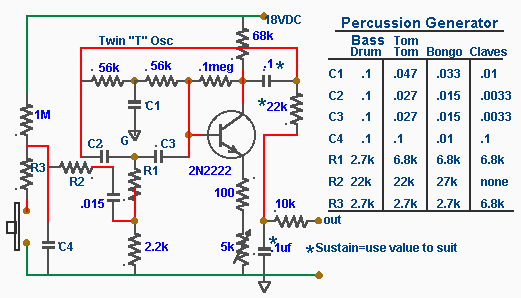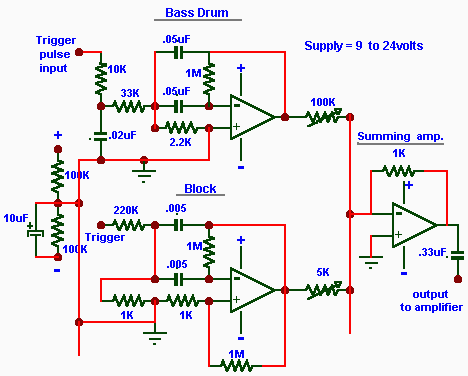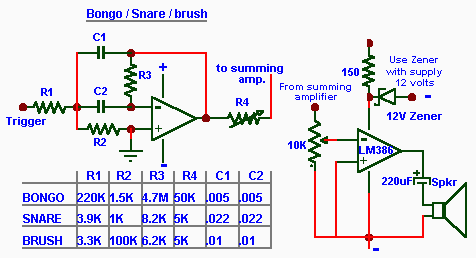You don't have to be a model-railroad hobbyist to enjoy an authentic-sounding steam whistle. This devise can find a place as a novelty in your bar, call to a meeting, racing start, whatever.
There is nothing to adjust. Feed the input into your amplifier, press the button and it blows.Changing the values of C1,C2 and C3 will determine the pitch of the whistle.
It is not an easy circuit to manage and some Bias adjustments may be required .
For the sound of a high-pitched European train use .005uf for the three capacitors. To produce the sound of American freights use a .05uf capacitor. The amount of steam can be varied by changing the value of R7. For more noise reduce its value. The noise is provided by Q2, an inexpensive transistor. Switching arrangement of the capacitors would provide flexibility in the choice of the whistle.

If you need percussion, or simply a noise maker, this circuit has many options. You can replace the push button switch with a trigger circuit (555) or any other form of low-frequency oscillator.
The 5k variable resistor at the emitter is set just below where the oscillation is sustained when the switch is pushed. Adjust to your liking for the most realistic sound.

Below is a complete op-amp version of the percussion generator to be used with a rythm tempo generator . An LM386 is used as the amplifier , Notice that the LM386 is connected across the total power supply and the Zener diode is used only if the power supply is rated above 12 volts otherwise connect directly to supply line.
For multiple application you can use the Quad LM324 op-amp but the TL084 works better. For single operation use an LM741 or similar .
The ground (common ) point you will noticed is made of two 100K resitances and a 10uF filter capacitor forming a voltage divider connected to the +/ - of the supply line and the output connected to the required junction of the inverting input of the each op-amp .

The output of each generator can be adjusted for loudness with the ouput variable resistor then mixed in the summing amplifier whose output is then connected through the .33uF capacitor to the main amplifier made of the
LM386 .
Unlike the Drum and Block circuits , the Bongo , Snare and Brush can be assembled with one basic circuit where only the
components values are changed to obtain the required sound . Incidentally , the capacitors values can changed to experiment with different sounds as you may wish without affecting the circuits operation .

Each generator can be used as a single unit , if so , the output variable resistance as well as the summing amplifier are omitted but the .33uF is added to the output then connected directly to the amplifier volume control .

